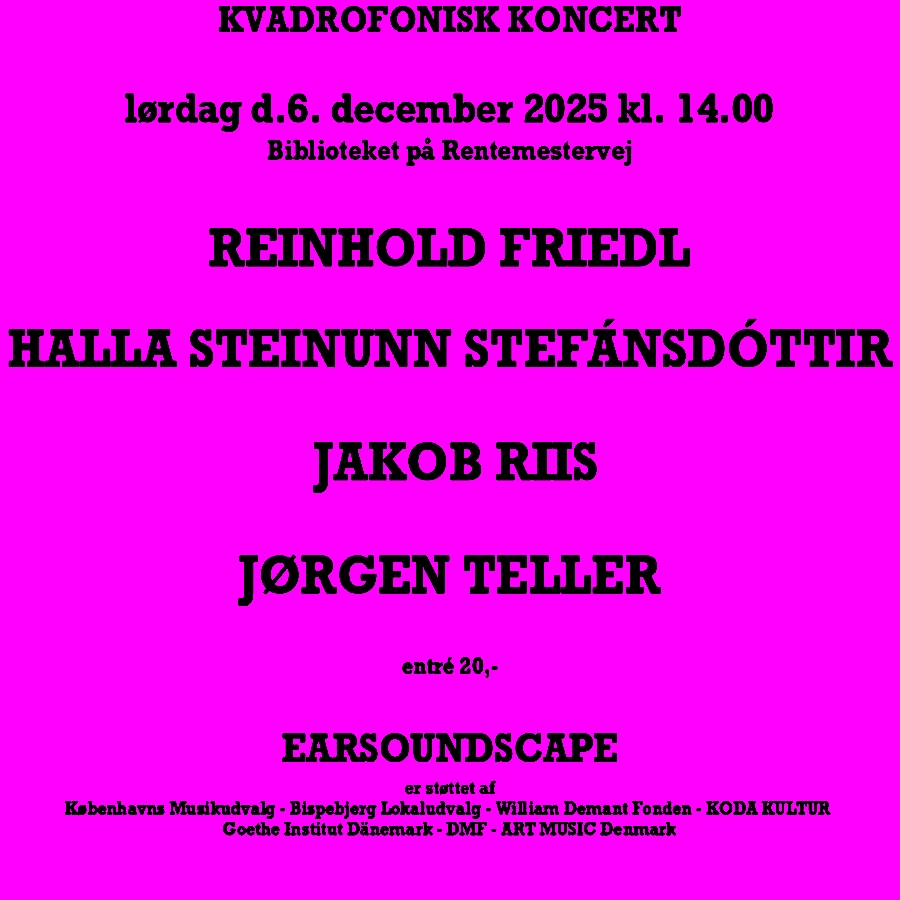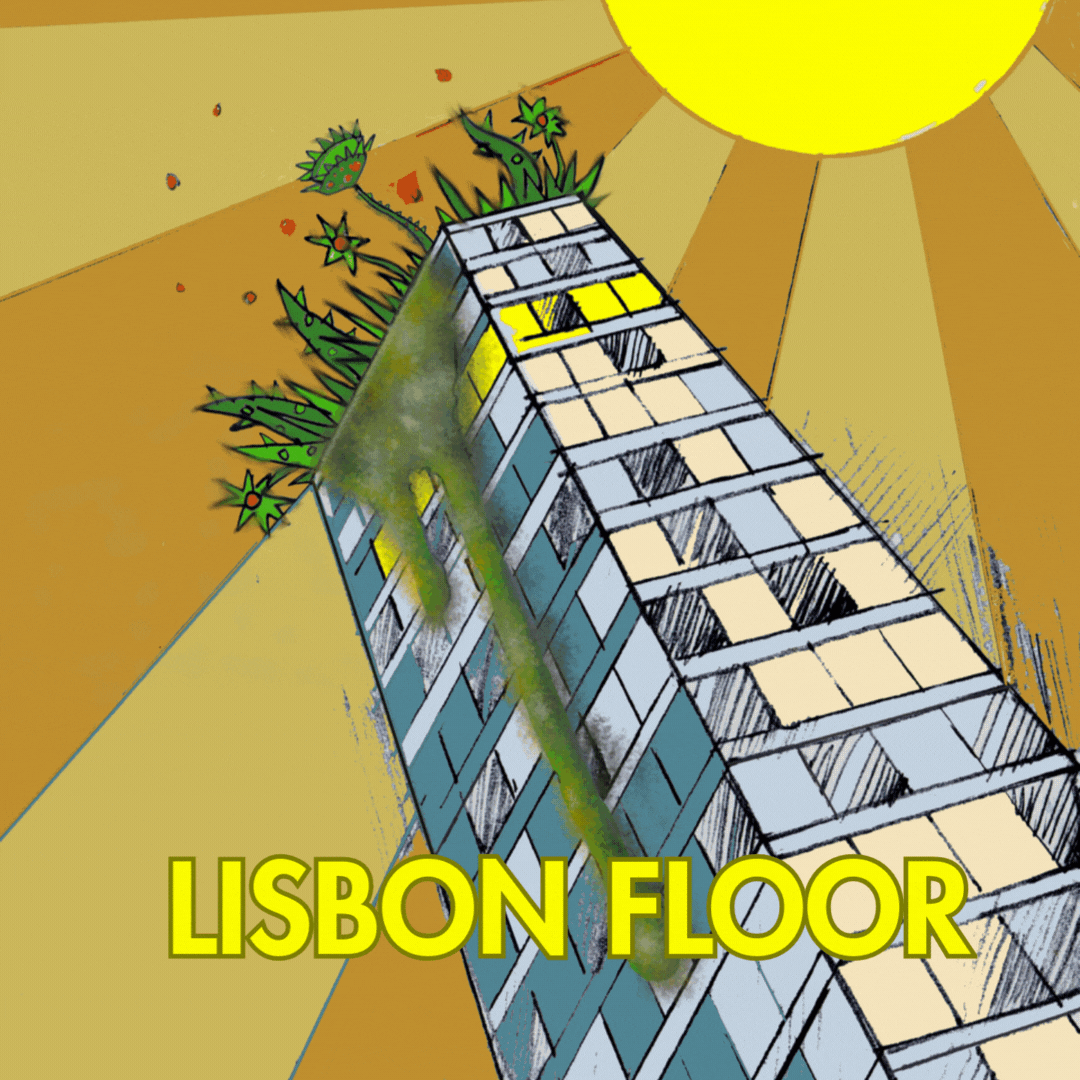The Myth Of the Sound City By the Limfjord
»I was one of those who was very critical in the beginning,« says Henrik Tinggaard from the Denmark Democrats to TV Midtvest – »but I’ve changed my mind.« In the midst of the ecstatic sound art installation Kanonslag, he stands in prime time alongside Struer’s mayor, debating whether politicians are justified in spending so much taxpayer money to promote Struer as The City of Sound. Since the 2008 financial crisis, the municipality has invested heavily in rebranding the town to attract and retain workers, and Struer Tracks – biennial of sound and listening, this year with the theme Municipal Practices – is just one of many initiatives.
Now that even the Denmark Democrats are on board, it seems Struer Tracks has finally earned the city’s official seal of approval
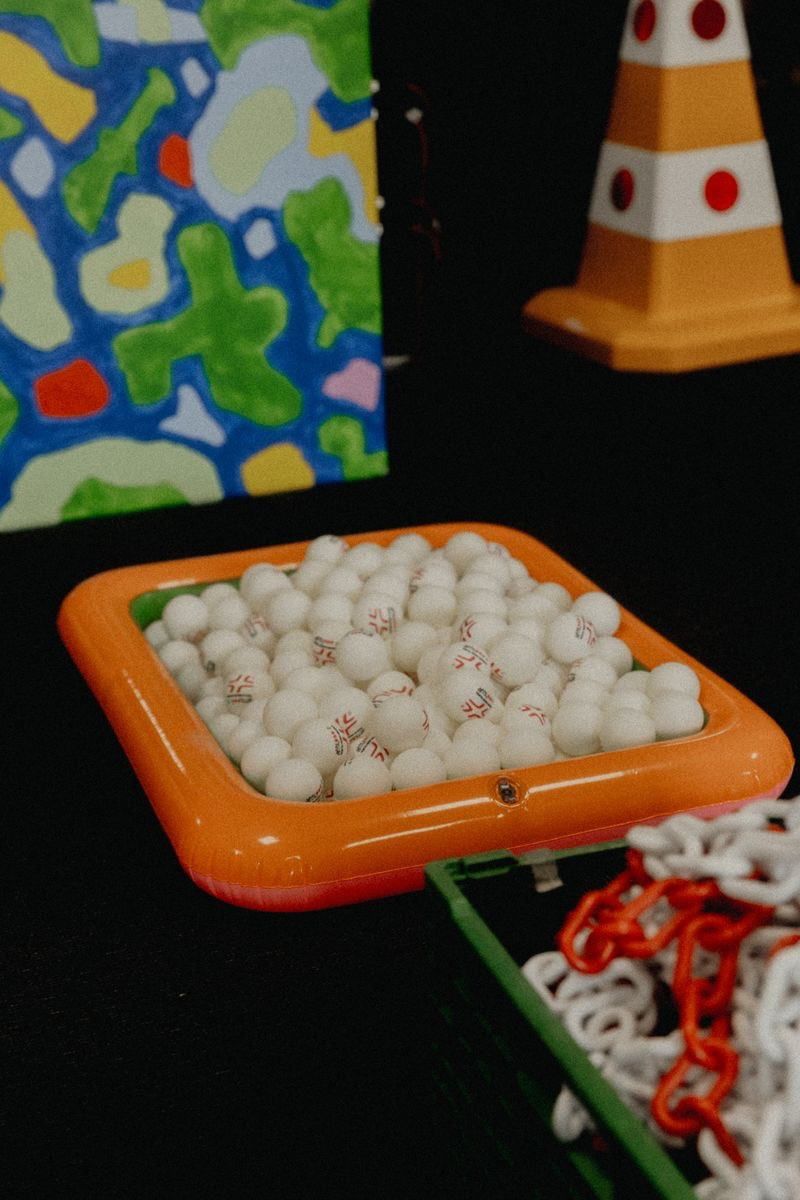
The organizers couldn’t have picked a better location for the interview: after all, who could object to the nostalgia-tripping playground that the mischievous Norwegian artist duo Samvær Under Tilsün had created in a vacant shop next to the local grocery store? Even the grumpiest conservative would be forced to smile at the work’s over-the-top inventions. The main attraction: a ping-pong table wired with sensors so that every bounce of the ball shaped a fragmented chiptune composition, accompanied by colorful 16-bit animations flashing across the pixelated net. The arcade-glorifying, chaotically euphoric mood of the room stood miles apart from the heavy, esoteric atmosphere of the galleries where sound art has so often been confined.
The biennial’s raison d’être shone through in the interview segment: it isn’t just about finding new places to unfold sound art, but about creating space for a conversation on sound and listening that isn’t limited to a closed circle of visiting academics and artists. And now that even the Denmark Democrats are on board, it seems Struer Tracks has finally earned the city’s official seal of approval.
The familiar municipal dread
I’ve been visiting Struer Tracks since day one in 2017, when it launched as a biennial of »site-specific sound art in public space.« I witnessed the transformation that came with new artistic director Jacob Eriksen in 2022: a major liposuction, slimming the biennial down from several weeks into a concentrated festival format with a packed program – this year including sound art installations, performances, communal meals, workshops, book launches, city walks, film screenings, and even an annual general meeting. A clever move: this way the sound art community from all over the world can gather at once, enabling exchanges that put Struer not only on the map of Denmark, but on the world map. Once again, the festival radio broadcast live from their iconic caravan with reports, intimate concerts, and interviews. Nobody had to miss a thing. Brilliant.
On the surface, everything seemed as usual in the citizens’ service office on Smedegade
More importantly: what was previously hidden as a tacit premise, Eriksen has made explicit – that sound cannot be separated from listening. With this year’s theme, Struer Tracks has become even more consistent in articulating sound art as a social field. Perhaps inspired by researcher and sound artist Brandon LaBelle’s concept of »social acoustics« – he was behind The Freedom Room at Struer Tracks 2021, which in retrospect looks like a sketch for Eriksen’s renovation of the biennial – the notion of the municipal was reframed: from »binders and envelopes« to embracing all kinds of communities, as the program description put it.
With this year’s theme, Struer Tracks makes no secret of its alliance with the municipality. But that doesn’t mean the biennial refrains from turning a critical gaze on its partner. This was most evident in the installation Borgerservice for lytning (Citizens’ Service for Listening) by the Bureau for Listening collective. On the surface, everything seemed as usual in the citizens’ service office on Smedegade: the familiar municipal dread returned the moment I stepped sweating into the claustrophobic room. Generic graphics on the screens, endless muzak in the speakers, the municipal-grey carpet tiles that seem specially designed to suck every dream out of whoever treads on them. And yet, something was off. »Ask your best question, and we will listen to it,« read the screen. On the desk, a pigeonhole held forms to grant »listening power of attorney« or file »listening reports for the population registry.« The staff – members of the Bureau for Listening in uniform – were unusually patient. The utopian flipside of the concept opened cracks in the oppressive reality: what if citizens’ service didn’t function as an automated assembly line, but as a genuine encounter with people who actually wanted to listen?
We sat in a circle, each in front of our own speaker, with a pulse sensor clipped to an earlobe, and felt our heartbeats as booming speaker-thuds against our backs
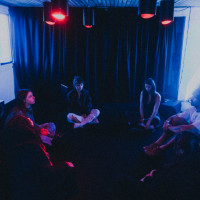
The inner organs of sound
While Borgerservice for lytning was more thought-provoking than sensorial, plenty of works at this year’s biennial went straight for the body. Artistic researcher Laura Papke had blacked out Molehuset at the marina to create an intense focus for her special heartbeat experiment, Sonic Driving. We sat in a circle, each in front of our own speaker, with a pulse sensor clipped to an earlobe, and felt our heartbeats as booming speaker-thuds against our backs and infrared light from above. Eventually, the entire circle’s rhythms played simultaneously: at first like a pelting rainstorm, then gradually aligning with one another. Despite the clear point about bodily connectedness and synchronization, the location at the end of the pier felt unresolved, even distracting – the work could have been staged in any dark room.
It felt like staring directly into the crocodile jaws of the abyss, as bass frequencies swallowed everything around us
By contrast, the low-frequency piece Bodies and Subwoofers (B.A.S) by Brazilian artist Stefanie Egedy was perfectly placed in the industrial harbor. Played through twelve giant subwoofers arranged in a V-shape, the work lay dormant most of the time, like a snoring beast. But every hour the monster awoke with a seismic force that must have had staff at the Geodetic Institute double-checking their seismographs.
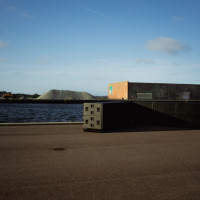
It felt like staring directly into the crocodile jaws of the abyss, as bass frequencies swallowed everything around us. The subwoofers created a paranormal, distorting magnetic field, and on the deserted waterfront it was as if the work were taking huge, ground-shaking bites out of reality.
It was as if someone had blown apart an organ, spilling its viscera across the floor
Less bone-rattling – but equally fascinating – was Belgian sound artist Anouk Kellner’s deconstructed anatomical organ Aichoir no. 2: Dirges for (26) Coded Organ Voices, installed in a defunct bank. A compact bellows mechanism with attached tubes inflated balloon-like organs connected to different organ pipes.

It was as if someone had blown apart an organ, spilling its viscera across the floor. Doomed, the organ wheezed like a wounded animal, the composition stretching out its final breath. There was a mournful poetry in the asthmatic wheeze of the pipes that set the work apart from many other mechanical sound organs. The subtle pathos was deepened by Kellner’s concluding performance, where she first tried to resuscitate the organ, then gave it euthanasia by squeezing the last air out of the balloons.
Two young men opened their styled cars – complete with Wunderbaum and cans of Monster in the cup holders
The dirty and the polished ends of the harbor
On the way to Ross Alexander Payne’s Modified Import_3x9, we passed the dilapidated DLG silo – a ghostly monument to Struer’s changes. Locals still talk about when sound artist Christian Skjødt resurrected the giant with his 2019 noise work The Receiver. Less spoken of are the unofficial gatherings around the silo, where young car enthusiasts show off their lowered rides and burn rubber.

Payne coaxed some of them into the light, inviting two young men to open their styled cars – complete with Wunderbaum and cans of Monster in the cup holders – so the creative class could get a glimpse of local car culture, while Payne’s collages of Struer recordings blasted through the stereos. It became the most striking cultural meeting – though perhaps a bit too neat and curated compared to the unauthorized wildness that usually defines the scene.
»Finally, thank you!« a disgruntled café guest exclaimed when the concert ended – his dinner peace had been disturbed
Far more successful was guitar icon Snöleoparden’s performance Time-Space at the civilized end of the harbor. Three guitarists positioned themselves at distant points – one on a restaurant rooftop – and played through directional speakers like those used in stadiums. Patiently, they explored the marina as a resonance chamber with staccato strokes ricocheting across the water, phasing rhythmically and chasing their own tails.
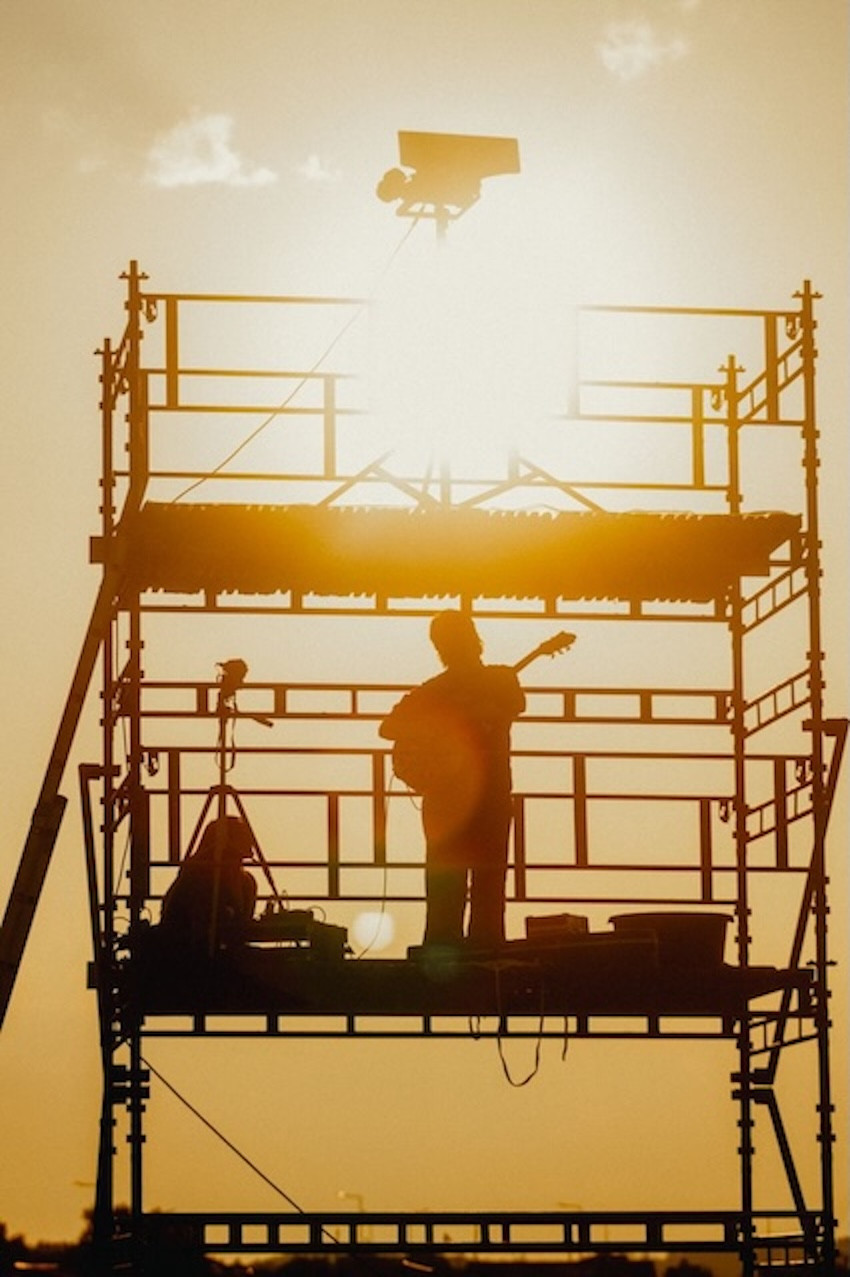
The Reich-like phasing gave way briefly to an ethio-jazz flavored motif, a melodic bubble in the rhythmic whirlpool. The work ended with wonderfully teeming Morse-code signals crackling across the harbor. »Finally, thank you!« a disgruntled café guest exclaimed when the concert ended – his dinner peace had been disturbed. But it’s exactly such interruptions that make art come alive.
How does your rat voice sound?
Another step in the biennial’s temporary takeover of municipal spaces was artist and electronic musician Julie Østengaard’s meta-concert in the basement venue Kælderen under the local music school. The room’s adolescent aura of youth club proved a perfect match for Østengaard’s self-staged aesthetic of failure. It quickly became clear that all the glitches and breakdowns in her overheated glitch pop were part of the plan. Østengaard fumbled with cables and microphones, caricaturing insecurities that also felt like an honest part of her persona.

At one point, a silly AI-generated video introduced the concept of »rat voices« – the noisy, critical inner voice. But irony was constantly undercut by unfiltered vulnerability: when Østengaard whispered her own rat voice – »people pretend they like me, but really they think I’m annoying« – then passed the mic around so the audience could share theirs. The fragile safety of being a mere spectator collapsed, and fallibility spread like wildfire in this wonderfully collapsing concert situation.
»People pretend they like me, but really they think I’m annoying«
Cut to another charismatic basement – the amphitheater-like Kuben at Sound Hub Denmark – not built for teenage dreams but for testing sound gear. Here we heard two excellent electronic concerts, each transforming the room with its own form of hypnosis.

Diane Barbé enchanted with eco-acoustic imitations of natural sounds, balancing imperceptibly between reality and representation, opening a portal to a tropical in-between dimension. And Ex Continent sent us into galactic orbit with sharp, prickling impulses – sonic acupuncture swarming around us like fireflies.
City of sound – or city of listening?
It’s easy to forget that the story of the sound city by the Limfjord is just a myth invented by clever marketers. When the harbor industry could no longer sustain the town, attention turned to its old export pride, Bang & Olufsen, and the idea was born that Struer should have a special relationship to sound – simply because the company, which today sells luxurious audio systems worldwide, was founded here a hundred years ago and still has its headquarters in town.
At Struer Tracks, we weren’t just made to listen passively, but invited into the conversation
On the official website, it reads almost like a saga of a small, happy village with »proud sound traditions.« Sound is ingeniously woven into Struer’s origin story, as something that »has defined our DNA.« I can well understand if some residents feel misrepresented by this community-forging creation myth.
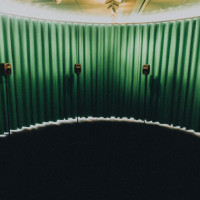
That’s why it was fitting that Struer Tracks this year turned its focus to the local community – not as something stuck to you like a social security number, but as something nourished by exchange, horizon, and interruption. The biennial’s shift in focus could be felt clearly: from sound as something that in itself carries site-specific meaning, to listening as an active practice that continually shapes identities. A welcome counterweight to the municipality’s branding adventure, where good sound quality is Struer’s precious mineral – the sacred spring meant to secure its economy. At Struer Tracks, we weren’t just made to listen passively, but invited into the conversation. To take responsibility. The draft law displayed as part of artist Julie Nyman’s loudspeaker work Fordelene ved at være ordblind (The Advantages of Being Dyslexic) was the most pronounced example. Perhaps sound art can reshape the myth of Struer – so it becomes not only a story of sound, but of listening too.
Struer Tracks, Struer, August 14 – 16
English translation: Andreo Michaelo Mielczarek. Proofreading: Seb Doubinsky
